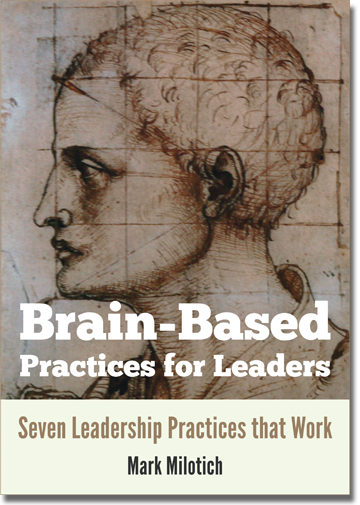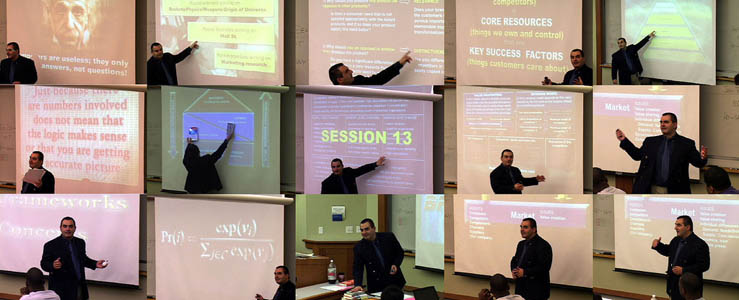You Are What You Think: Being Resilient Does Not Require Being Right
When we experience a bad event, we ask ourselves why. Why did it happen? Why am I experiencing this? How we explain negative experiences to ourselves strongly influences whether our response is resilience or resignation. Optimism, not accuracy, is essential for resilience.
Learning to Have a Difficult Conversation
Tom Truly is project manager on a project that has recently missed a deadline and lost a key customer. Sarah, the project sponsor, has called a meeting with Tom to discuss progress. She has been under pressure from senior management to “fix” the high-visibility project. Sarah is angry that Tom didn’t inform her in advance about the project issues. Every time she asked Tom how things were going, he answered: “Tip top!”
Shake, Rattle and Roll—Volatility Will Make Your Team Stronger
Volatility, uncertainty and error lead to unpredictable outcomes. This can be a major cause of stress. But volatility will help you if you have options that allow you to profit from the upside without bearing a large cost from the downside.
Chock full of the latest brain science to explain not just what you should do to be a great leader & manager but importantly—WHY.
Well thought out and researched, brilliantly structured and with great and positive advice.
Great read, direct and to the point. No fluff. Great for reference.
How to Interview Stakeholders, Part 2
In the first part of this series I explored what makes a good stakeholder interview in general. In this article, I will write about how to use open questions, sketches and thinking out loud during stakeholder interviews. These techniques from the fields of usability and user experience can make interviews with project stakeholders more effective.
How to Interview Stakeholders, Part 1
A good interview helps us understand expectations, gain insights and win people for our cause. For project managers, interviewing is an important technique for clarifying stakeholder requirements. What makes a good interview? I'll be exploring this in several parts. In this article, I cover preparing for and conducting a stakeholder interview.
A Reminder for Turbulent Times: Why Zebras Don’t Get Ulcers
Headlines full of layoffs not only remind us that we are in an economic downturn but also instill fear that we could be next on the list. Friends confirm that the level of anxiety is running high in many organizations. There is talk about cancelled projects and a prevailing atmosphere of uncertainty and worrying.
New Years Resolutions for Project Managers
Most of us make resolutions for the new year. And almost as many of us break them. "Research shows that about 80 percent of people who make resolutions on Jan. 1 fall off the wagon by Valentine's Day," says Marti Hope Gonzales, associate professor of psychology at the University of Minnesota, according to the New [...]
In Focus: Twitter and Storytelling
In the last few weeks I have stumbled upon a lot of discussions on "digital storytelling" in the media. In their Educause article Web 2.0 Storytelling. Emergence of a New Genre, Bryan Alexander and Alan Levine encourage learning professionals to use blogs and microblogs to create a narrative that captures the interest of the audience [...]
How to Interview Stakeholders, Part 2
In the first part of this series I explored what makes a good stakeholder interview in general. In this article, I will write about how to use open questions, sketches and thinking out loud during stakeholder interviews. These techniques from the fields of usability and user experience can make interviews with project stakeholders more effective.
How to Interview Stakeholders, Part 1
A good interview helps us understand expectations, gain insights and win people for our cause. For project managers, interviewing is an important technique for clarifying stakeholder requirements. What makes a good interview? I'll be exploring this in several parts. In this article, I cover preparing for and conducting a stakeholder interview.
A Reminder for Turbulent Times: Why Zebras Don’t Get Ulcers
Headlines full of layoffs not only remind us that we are in an economic downturn but also instill fear that we could be next on the list. Friends confirm that the level of anxiety is running high in many organizations. There is talk about cancelled projects and a prevailing atmosphere of uncertainty and worrying.
New Years Resolutions for Project Managers
Most of us make resolutions for the new year. And almost as many of us break them. "Research shows that about 80 percent of people who make resolutions on Jan. 1 fall off the wagon by Valentine's Day," says Marti Hope Gonzales, associate professor of psychology at the University of Minnesota, according to the New [...]













